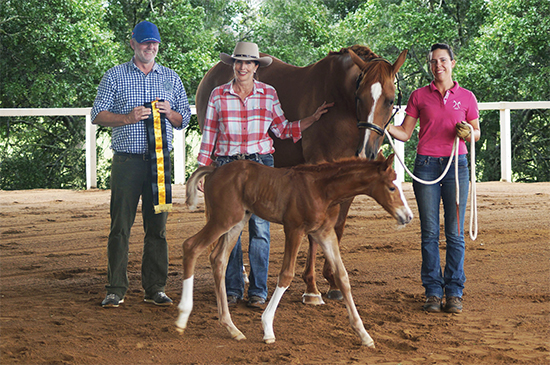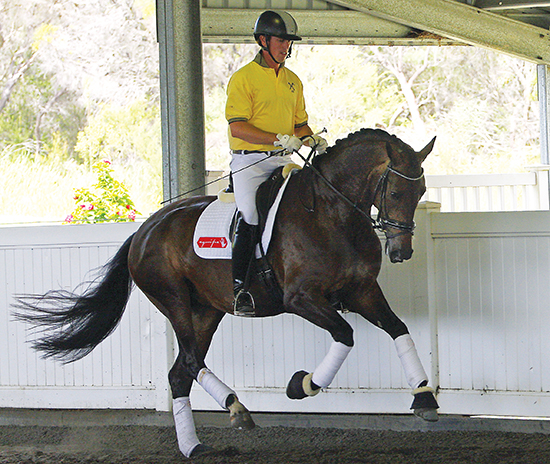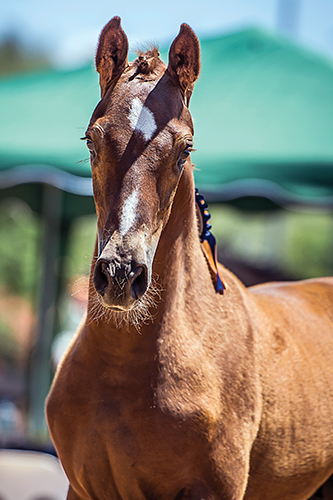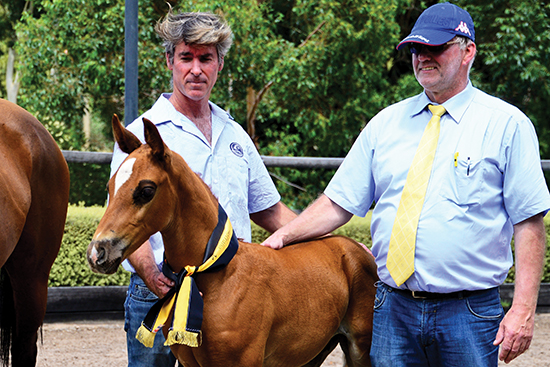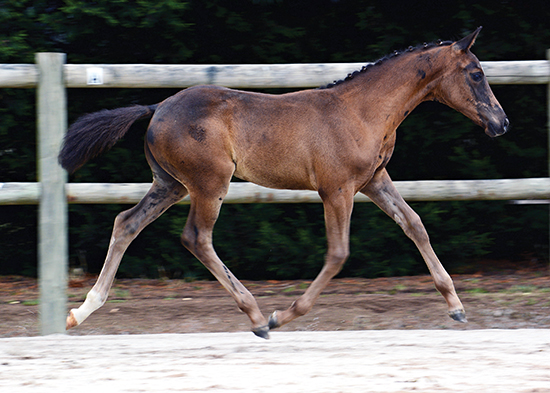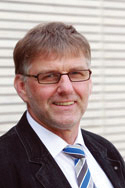 This year, the Hanoverian Horse Society of Australia hosted Hartmut Wilking from the Hanoverian Verband in Germany, as he conducted a series of inspections all over Australia. As Helmut told us, it was a new experience to be ‘down under’…
This year, the Hanoverian Horse Society of Australia hosted Hartmut Wilking from the Hanoverian Verband in Germany, as he conducted a series of inspections all over Australia. As Helmut told us, it was a new experience to be ‘down under’…
“It’s my first time in Australia. A week before that I was in New Zealand. Twice I have been to Canada, once to the United States – and of course, in Europe I have visited a number of countries where we have breeders.”
Do you see differences in the horses in Canada, New Zealand and Australia?
“Between Canada and New Zealand and Australia, I see no difference. I see a little difference in the USA, for me they have two kinds of breeders, one group who are orientated on German breeding, and the other group, they only want to have a foal. That’s a little different. What I see in Canada, New Zealand and Australia, is that the breeders are well informed about the stallion lines, not so much about mare lines – although I think sometimes they get the best information a little bit late. There is some information that we get a little earlier, in Hanover, all the time we are in the right places to see foals, to see horses, to see riding, to see competitions, and we have a lot of information earlier than the people who live far away. But here I find people very well informed about the stallions and the breeding of the stallions.”
Arnage Fendi who was a gold award foal. She is by our stallion Fiderfurst out of Arnage Abbey Road by Alabaster. She was only 4 days old when she won the award. She is sold to New Zealand already.
Do you think Australians have taken advantage of the rich pool of Thoroughbreds we have…
“In Germany at the moment, we lack the riding quality of the Thoroughbred lines. We miss the type of good Riding Horses in our Thoroughbred population. I have seen in New Zealand, better types of Thoroughbred, more uphill, the neck is better… I have not been long in Australia, but I haven’t seen so many Thoroughbreds yet. What I see is that the good mares in Australia, the quality is not less than I see at a mare show in Germany. If we look at all the foals at a regional breeding club in Hanover, the quality is like the quality we see here. In Hanover we have 5000 foals a year, here we see 100 or 120, but there is absolutely no difference.”
In Europe, you have breeders that are second, third generation breeders – is it harder here where Warmblood breeding has not been going for so long?
“Of course it is easier for the German breeders – easier to get semen, I live near Osnabrük, and in the morning I can drive for an hour and a half and have my choice of the fresh semen of 500 stallions. It’s easier to get the mares pregnant… the people in Australia and New Zealand must spend a lot more money to get the mares pregnant. But even in Germany we have lost our generations of breeders, we have lost the knowledge of the older stallions and their qualities, we have in the future only people who have been breeding for ten or twenty years, not for generations. We have lost a lot of knowledge and we have to re-think how to deal with this, it is not easy for any of the breeding associations in Germany, not just Hanover. It’s a problem with the new generation, my kids, they have no interest in horses. It’s difficult to get new breeders, and when they start breeding, they don’t have any knowledge of the dam lines, and that is very important – we have had dam lines since 1871.”
Revelwood Amaretta – Ampere x Donnerschwee x Sandro Hit x Karon. 9 for rideability, 9.5 for trot and 10 for canter! An elite mare candidate and awarded a 10 from Herr Wilking. He said ‘it was a really hard decision not to give a 10 for the trot too’!
Do you come from a family of horse breeders?
“My father was a horse breeder. He started in 1950 with the Hanoverian Association. I come from Westfalia, just over the border. He was not a big breeder, like us, we now only have three mares. We breed jumping horses. I was a jumping rider, and I am a course designer in Germany, so that is where my interest is. There is a bit of a problem in Hanover with jumping breeding, in the past we haven’t had very good sports results. We have had good rideability and good gaits, and good looking, so it is not so difficult to sell them if they can’t jump so well. When you have a horse that is not pretty, no basic gaits or rideability, then it is a problem if he doesn’t jump. Is this the right emphasis or not, that is difficult to say. At the moment in the jumping rankings we are only in 8th or 9th place, but we need horses for everyone and it is difficult – Belgium and Holland they only breed for the top jumping sport, and that is different breeding.”
Champion Colt Foal, and Gold Ribbon winner, yesterday at the Remi Stud Open Day. His name is Remi Vigneron (Viscount (Ger)/EM Remi Love Story by Lanthan). Love Story is the full sister of Underdiscussion (aka Remi Lethal Weapon).
What stallions are you using?
“Normally the stallions from the State Stud. I also use a few private stallions that have good sports results, and I think that is the way to get more quality in our horses. I breed with Stakkato, of course, and some of the sons, I have used Livello, a Holstein stallion. I have a Livello mare, a Grandeur mare and a Contendro mare. The stallions that I use are the Stakkato son, Stanley, I used Quaid, by Quidam’s Rubin. Quaid was the champion of the five-year-old jumping horses at the Bundeschampionate, he is ten now.”
Is it important to try and keep a distinctively Hanoverian jumping horse? Or are we moving to the era of the international jumping horse, a mixture of all the studbooks…
“I think it is mixed. When you have Quidam’s Rubin, then you have French blood. In the last few years, there have been quite a few Belgian stallions selected for breeding in Hanover. You need the best in the world and to look where-ever you find it, we need the Holstein, we need the French.”
OEH For Chili with breeder, Michael Procter, and Hartmut Wilking on the WA leg of the 2015 HHSA registration tour.
In dressage breeding we are more and more seeing Dutch blood come into Hanover…
“I think there is a difference between dressage and jumping. Jumping is more international in the breeding. In dressage we have been breeding for the same thing for twenty or thirty years, and I think in Germany, and in Hanover, we have gone the right way in our dressage breeding. I think it is difficult to use a lot of jumping blood in dressage breeding, and the Dutch horses have a lot of jumping blood when you look in the third, fourth, fifth generation.”
“What is interesting for me, I looked at the World Young Dressage Horse championships in Verden and in two years, the judging was completely different. One year, in the judging they looked more for the spectacular gaits, without the horse using the whole body, and the judges gave good scores for that sort of riding. In the Grand Prix sport it was has been the same, it has changed there too.”
“The judges should look at the horse’s body because the horses have to compete in dressage for a long time, and it is only when the body is in balance, supple, that the horses can last a long time, not when they are tense and stiff. I think the judges have seen that, and we in Germany are on the right way for breeding dressage horses. Sure we should look when we see good dressage stallions in Holland, in Denmark there are some good stallions, and we should use that, but we shouldn’t change our thinking about what we see as a good horse and what is a good riding horse. Look at what the others are doing, but don’t change our rules…”
This is Hollingrove Felicity (Furstenball x Amaris (imp)/Ampere/Weltmeyer/Donnerhall. She was our highest scoring foal and was received a Gold award on the day.



